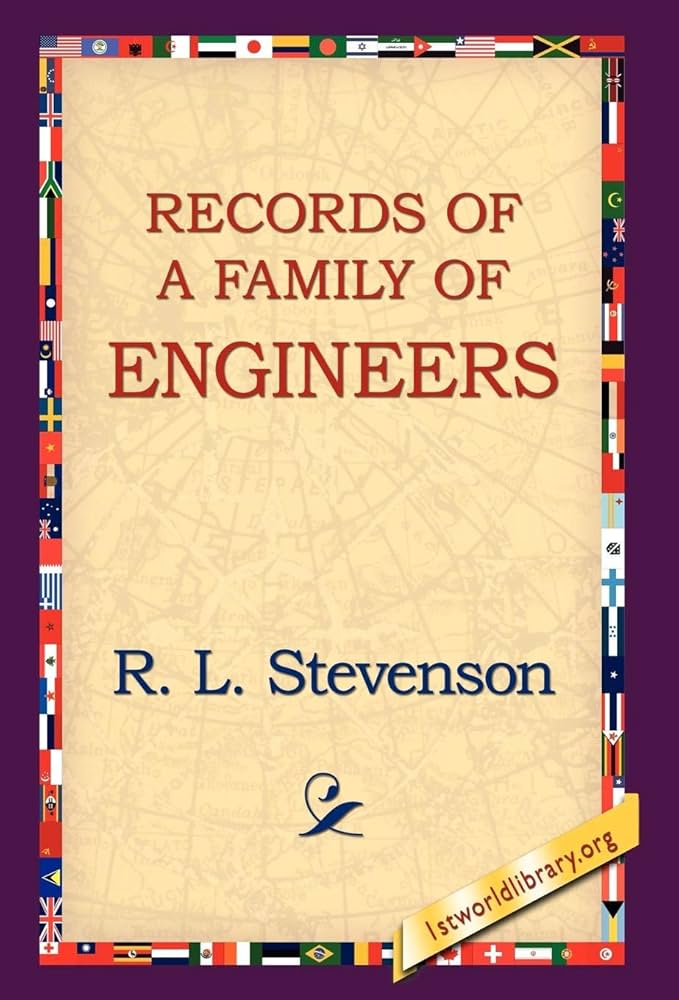Chapter I Domestic Annals
byChapter I begins with a lineage rooted in humble beginnings and shaped by enduring resilience. In 1665, James Stevenson, likely working as a tenant farmer, married Jean Keir in Renfrewshire. Their son Robert, born in 1675, later became a maltster, signaling a modest but stable livelihood. As the generations unfolded, another Robert Stevenson—born in 1720 from a second marriage—continued in the same trade, anchoring the family’s economic identity in Glasgow. This continuity of craft and responsibility ran through to Hugh and Alan Stevenson, two brothers born mid-century, who would meet untimely ends in the West Indies during a business pursuit gone tragically awry. Their loss left behind little more than a ship painting and a void that underscored the risks tied to ambition in uncertain global ventures. These early stories reflect a pattern of striving against the odds, where economic stability was hard-won and often imperiled by forces beyond the family’s control.
The family’s narrative is further shaped by the figure of Jean Lillie, whose determined efforts to secure an education for her son despite financial hardship add emotional weight to the account. Widowed early, Jean committed to ensuring her son’s upward mobility through learning, not luxury. Her perseverance marked the beginning of a shift in the family’s trajectory, moving from subsistence to intellectual aspiration. Around this time, Thomas Smith emerged as a successful entrepreneur whose interest in lighting and mechanics led to a career in lighthouse construction. His marriage to Jean Lillie’s daughter not only cemented a familial alliance but also connected ambition with opportunity. This union produced a household where professional mentorship and personal responsibility were tightly bound. The mingling of familial loyalty and practical instruction would become a recurring motif in the Stevenson legacy, forging ties between domestic purpose and national service.
Infant mortality, unfortunately, cast a long shadow over the family’s early years, a grim reminder of the fragility of life in the 18th century. Letters from this period reflect deep sorrow tempered by stoic faith, where grief was borne in silence or with sacred resolve. These private losses stood in stark contrast to the visible progress the family was making in public life, especially through their association with lighthouse engineering. Jean Lillie’s grandson, Robert Stevenson, rose under Thomas Smith’s guidance to become a pivotal figure in this emerging field. His intellectual curiosity, matched with practical discipline, made him an ideal student and successor. Robert’s eventual marriage to Jean Smith—his stepsister—symbolized not only familial consolidation but also the strengthening of the Stevenson-Smith alliance that would lead to decades of innovation. Their union served as both a domestic and professional compact, binding love and work into a singular life mission.
What makes these early chapters compelling is the interweaving of personal endurance with a growing national purpose. Scotland’s harsh coastlines demanded ingenuity and courage, qualities the Stevenson family began to embody more fully as Robert stepped into his role. His later achievements would owe much to these early years—years shaped by perseverance, discipline, and the sacrifices of those before him. These familial bonds, tested by loss and reinforced by shared ambition, created an environment where talent could be nurtured and deployed for the public good. Robert’s children would inherit not just his name but also the weight of his legacy, continuing a tradition of engineering that would span generations. This chapter, then, serves as more than a genealogical record; it is the prologue to a story of human tenacity and technical brilliance.
The blend of adversity, vision, and loyalty displayed by the Stevenson family offers more than historical insight—it reveals the timeless values that underpin any lasting legacy. In shaping Scotland’s maritime safety, they also shaped themselves, each generation refining and elevating the family’s aspirations. From tenant farmers to national engineers, their journey underscores how persistence and purpose can illuminate even the darkest shores.

